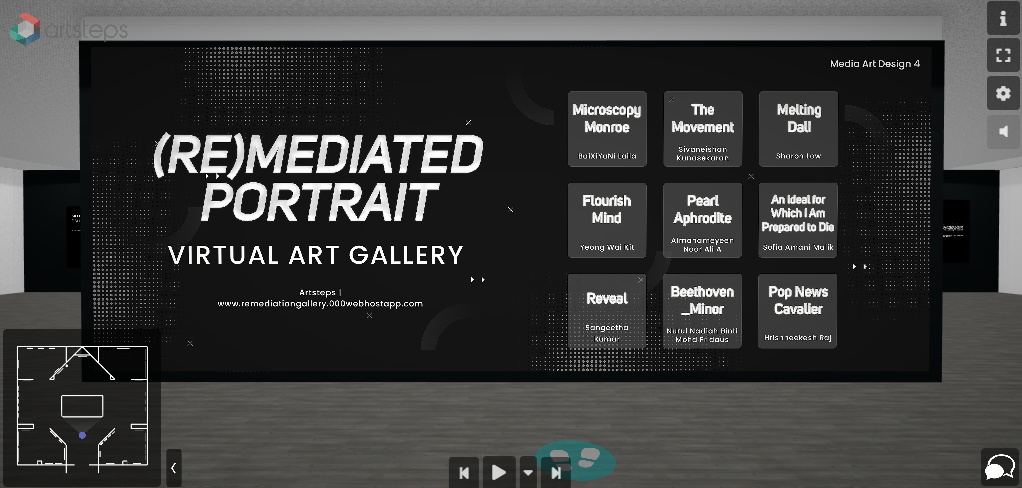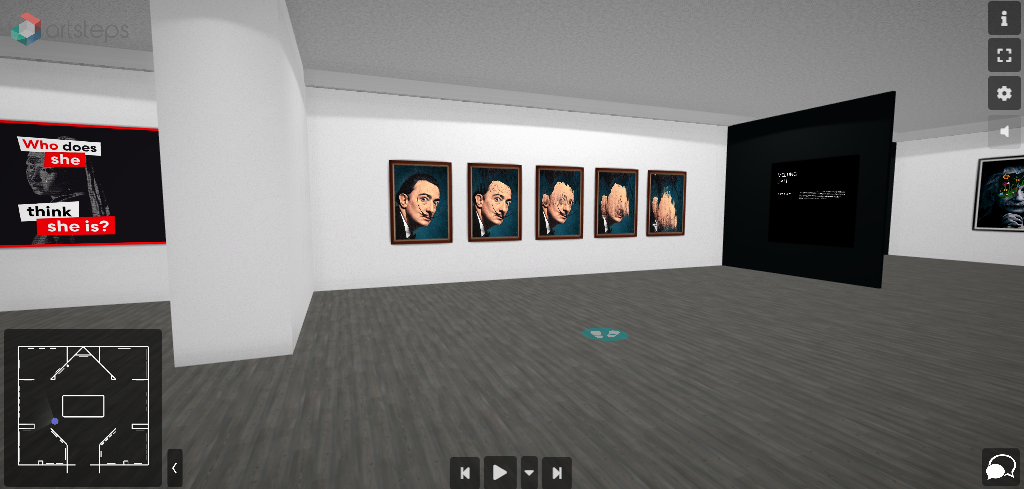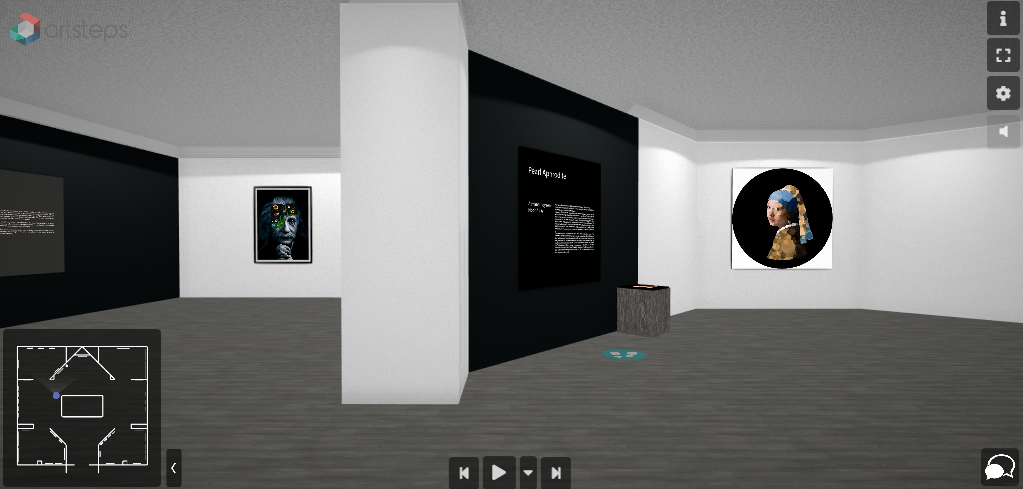Amid quarantine and the coronavirus pandemic, we may be struggling to deliver face to face classes and carry out learning activities on the campus. At the same time, the crisis is also a strong driver for creativity and innovation. In light of the COVID19 pandemic, we feel a duty to adjust our teaching and learning strategy to meet the changing needs of the situation, because there is reason for hope and indeed optimism in facing the new norm.
Available on Artsteps.com – a virtual showcase platform, this showcase features a VR gallery and voiceover-led presentations that summarize students’ project this year. In MA Design 4 this year, students were asked to do interdisciplinary reflections on portraits, by questioning the fundamental building blocks of a portrait image, analyzing the historical development of portraiture, its aesthetic trends, its media conventions, its materiality and symbolism then experiment with the visualizations.
Portraiture is a very old art form and drawn portrait was a way to record the appearance of a person but portraits have always been more than just a record. These images represent the past, the present, and the future of visual communication used to imagine and think through the important aspects in shaping our ecology of communication, especially in the communication of aesthetics. Once digitized, the images represent endless options for manipulation. Digital imaging has become ubiquitous tools in the consumption and production of visual culture. From a former consumer of cultural products, students were asked to become participants who extract their own meanings from what they see and give new life and meaning to this medium.
This unit seeks to trace what seeing beautiful images means on a social level, both in the arts and technology. The goal is to open up discussions of image phenomena and offer landmarks to expand visual competence concerning new definition operating with technological adjustments. From the fact that every instance of pictorial representation is a process of mediation and followed by a chain of remediation, Schulz purported that ‘images are both subsequent and antecedent at the same time’. Bolter and Grusin’s principle of remediation explains that modes of representation in new media have a much older history, that can be refashioned, borrowed, or repurposed. Through remediation, the old masterpiece receives new impetus and an entirely new arsenal of options.
To visit the exhibition, please visit: https://remediationgallery.000webhostapp.com/
MMA2123 (Media Art Design 4)
Coordinator: Dr Lim Kok Yoong





Address:
Faculty of Creative Multimedia
Multimedia University,
Jalan Multimedia,
63100 Cyberjaya,
Selangor, Malaysia
Email: fcmadmin@mmu.edu.my
Fax:+60383125554
Administration
Noralizah Abd Ali
Manager
Tel: +60383125550
Nor Azima Amir Norhalim
Assistant Manager
Postgraduate Matters & Undergraduate Change of Programme / Faculty, Leave of Absence (LOA) and Credit Transfer
Tel: +60383125835
Ahmad Munir Kamalul Sahar
Assistant Manager
Overall Foundation, Diploma and Bachelor’s Degree matters
Tel: +60383125551
